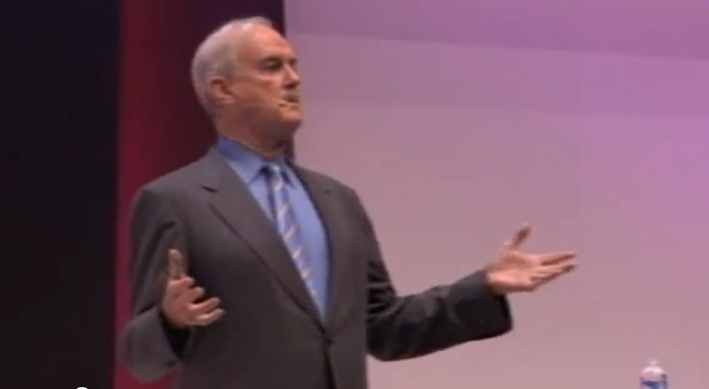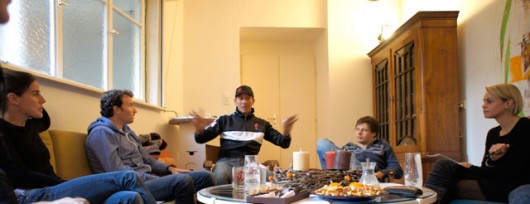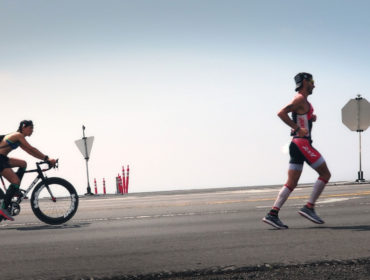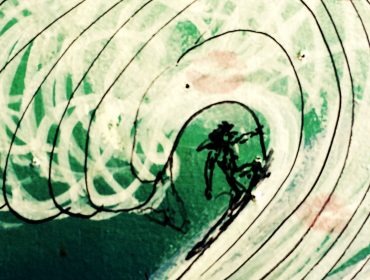About the prospective relation of Neurobotics with sport
Marvel or baggage: which motions are necessary, which are luxury
Modern intensive care interventions leave behind lots of handicapped victims from wars all over the world, from accidents of sports that have become more and more dangerous, from land mines or simple accidents, be it in traffic or household or let’s think about the billions of stroke patients. In former days we would have died, or survived as neglected cripples (the old term that stands for the notion that life as a handicapped is not worth living). Today this attitude has changed on a broad scale, to be handicapped is seen as problem one can learn to deal with, life turned into a manageable condition. Science has got its share in this change of values.
If you only think about the “Challenged Athletes Foundation”, h ow many people, kids and adults need artificial limbs. If a prothesis shall to be more than a mechanical device, then a meticulous analysis of muscles’ and bones’ shape and function is needed. We have to comprehend the whole biomechanical complexity of let’s say a finger, the musculoskeletal innervation, the web of tendons, the timing of muscle activation for a specific movement, the origin of the natural neural signals and and and … We have to have the knowledge about what is a motion and what is strength.
All this is required, if we want to reconstruct a limb that is fueled by brain signals. As a healthy creature all these events happen without reaching our consciousness, we are literally blind for the how we function. If we succeeded to unveil this ignorance, we could achieve a lot for the healthy and for the ill.
This is where the term mental touches the term neuromuscular, where it becomes understandable that a mental process is a physical process too. Each movement, behavior, task is initiated and executed by signals, which are actual nothing else than an electricity current, that runs down from your brain through the spinal cord and peripheral nerves to your effector cells/muscles. Force, stiffness, muscles and joint movements happen within 250 msec., the way back is shorter, from various sensors in the skin, the muscles, joints etc. – the brain is left aside – it takes 80 msec.. Converted into computer science language we are a computer running with 4 Hz.
Currently, we are not able to tap the signals from the brain and direct them to a computer and then to the respective limb construction. We have not enough knowledge about which movements we really need to mimic optimal function. We don’t know to which extent we can simplify structures and still achieve good function without creating new handicaps or mutilating the person even more.
The first brain-machine-interface: chips in the brain of monkeys or learning from experience
There have been undertaken 2 experiments in humans. Unfortunately, these experiments had to be abandoned because they are simply to dangerous and the outcome too unpredictable. Science had to go back to experimenting with monkeys, sad as always in human history, life pays for life … this would be a moral discourse at this point that I do not intend to get involved with in this place.
I want to summarize these studies in brief to delineate how very limited our knowledge is, and on the other hand how powerful our brain is. As an athlete it could lead you to a different perspective of evaluating studies, training methods and parameters used to assess performance, fatigue and training progress.
Neurophysiologist Andrew Schwartz and his co-workers implemented chips into the brain of monkeys. Their aim was to get the signals from the monkey brain that were responsible to move the arm. For this reason scientists placed two rhesus monkeys in a chair with their arms lightly strapped down to the armrests while a small grid with 100 electrodes in it was connected to 100 nerve cells (neurons) in a brain region associated with motion. The sensor grid picked up the neural activity and relayed it to a computer that controlled the prosthetic arm situated near the animal’s left shoulder.
In an initial phase of the experiment the researchers moved the prosthetic arm by using the computer as a control unit. The prothesis moved in front of the monkey, reached out and snagged a strawberry, grape or marshmallow dangling on a hook in front of the monkey. These actions induced an activation of the monkey’s brain area that was able to induce the execution of the respective motor action. After matching the neurons to different directions of movement and feeding the information into an algorithm in the software that actually moved the arm, the control was turned over to the immobilized monkey. The monkeys were successful at grabbing and eating the food in nearly 61 percent of the time.
Implementing electrodes into brains is far away from being a routine procedure and accompanied with a high risk for infections. Experience until now teaches us humbleness. There is a lot to learn still, the many questions that the whole neurobotics brings about proves that our current knowledge is built on many a hypothesis that is too short-sighted and incomplete, and sad to say, in many cases misleading the interpretation of the experimental data.
Neuromuscular recruitment and neural control or what can be learned for sport training
Sport science is in my opinion flawed by its addiction to draw linear conclusions and underestimating the importance of time. To accept time as an integral part of all data collected and all parameters used to infer from them a level of performance is a major challenge to optimize and progress performance.
From the studies in the field of neurobotics we know that there are brain areas for neural control and behavior induction that are characterized by redundancy, that means that different neural pathways can be used to initiate identical actions. Different patterns of neuromuscular signals induce the same behavioral patterns, the same output.
It seems that the selection of a specific pathway follows the principle of energy optimization and minimization respectively. If we are able to develop methods to detect these pathways, we may be able to predict the most subtle disease expressions and discover the most subtle reasons for a performance decline, but this is still future talk.
For now, I think it can tell us, that we have to train our brain to be able to use all available pathways for action, and we have a lot more than we are used to use… the brain should be integral part of training, also of training sensorimotor function and neuromuscular recruitment. From muscle fiber biopsy studies we know that under most conditions of muscle contractions only 50% of the fibers are activated. Is this due to a safety margin that prevents us from experiencing complete exhaustion – a trauma that would need hospitalization? Or can we optimize muscle fiber activation by training and increasing neuromuscular recruitment? One more thing that we may learn from this field of science is actually very basic, it is to analyze our movements and the involved muscles, and train to execute them arbitrarily to learn about muscles we haven’t been aware of before.





